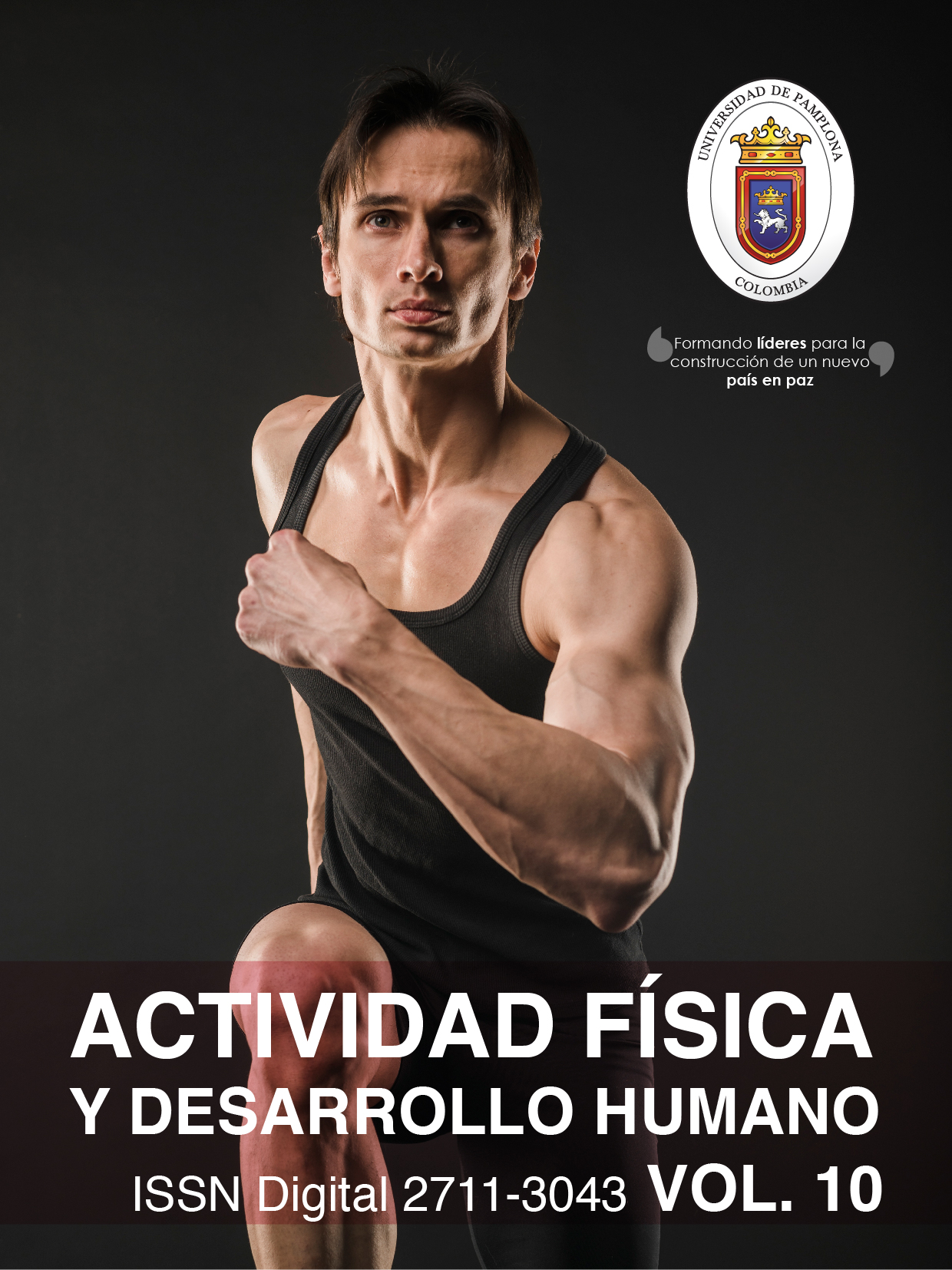Composición corporal y desempeño de la condición física en escolares de 6 a 16 años
DOI:
https://doi.org/10.24054/afdh.v10i1.611Palabras clave:
Condición física, Composición corporal, Salud, Escolares, Eurofit, NutriciónResumen
La presente revisión sistemática pretende analizar la relación entre la composición corporal y el desempeño de la condición física en escolares de 6 a 16 años. La búsqueda incluye artículos publicados entre el 2009 y 2019 para ello se utilizaron bases de datos en inglés, español y portugués en la primera búsqueda se encontraron 337 artículos; finalmente fueron seleccionados un total de 14 estudios. En cuanto al proceso metodológico a través de las variables: condición física y composición corporal, valoración nutricional y actividad física, los resultados sugieren que la condición física aumenta con la edad y a su vez disminuye con la obesidad, presentando en la actualidad porcentajes significativos de sobrepeso y obesidad. No obstante, la prevalencia en los dos sexos con riesgo cardiovascular se asocia a bajo nivel cardiorrespiratorio y a su vez, el IMC moderado o alto se asocia con el sobrepeso; Se resaltan los índices superiores de condición física en todas las edades, en los niños frente a la fuerza-potencia y en las niñas flexibilidad-equilibrio, así como la condición física mejora con la edad en niños que niñas. Para concluir se identificó que los estudios en composición corporal tienen relación significativa frente a la condición física.
Descargas
Referencias
Antero-Jacquemin, J., Pohar-Perme, M., Rey, G., Toussaint, J. F., & Latouche, A. (2018). The heart of the matter: Years-saved from cardiovascular and cancer deaths in an elite athlete cohort with over a century of follow-up. European Journal of Epidemiology, 33(6), 531–543.
Armstrong, M. E. G., Lambert, M. I., & Lambert, E. V. (2017). Relaciones entre diferentes estados antropométricos nutricionales y aptitud física relacionada con la salud de niños de primaria sudafricanos. Annals of Human Biology, 44(3), 208–213.
Arnaoutis, G., Georgoulis, M., Psarra, G., Milkonidou, A., Panagiotakos, D. B., Kyriakou, D., & Sidossis, L. S. (2018). Asociación de parámetros antropométricos y de estilo de vida con niveles de condición física en escolares griegos: Resultados del programa EYZHN. Frontiers in Nutrition, 5, 10.
Bent, M. A. (2016). Valoración de la velocidad cíclica por medio de la aplicación del Tapping test en escolares de 7 a 18 años de edad en cuatro Instituciones Educativas Distritales del sur de Bogotá.
Gulías-González, R., Sánchez-López, M., Olivas-Bravo, Á., Solera-Martínez, M., & Martínez-Vizcaíno, V. (2014). Aptitud física en escolares españoles de 6 a 12 años: Valores de referencia de la batería EUROFIT y riesgo cardiovascular asociado. Revista de Salud Escolar, 84(10), 625–635.
Haslofça, F., Kutlay, E., & Haslofça, E. (2017). Analysis of three decade changes in physical fitness characteristics of Turkish children aged between 11 and 12. Turkish Journal of Sports Medicine, 52(4).
Huang, Y. C., & Malina, R. M. (2002). Physical activity and health-related physical fitness in Taiwanese adolescents. American Journal of Human Biology, 21(1), 11–19.
Leuciuc, F. V. (2017). Evaluación de la aptitud física de los estudiantes mediante el uso de la batería de prueba Eurofit. Annals of the “Dunarea de Jos” University of Galati: Fascicle XV, Physical Education and Sport Management, (2).
Moselakgomo, V. K., Monyeki, M. A., & Toriola, A. L. (2014). Physical activity, body composition and physical fitness of primary school children in Mpumalanga and Limpopo provinces of South Africa. African Journal for Physical, Health Education, Recreation and Dance, 20(1), 343–356.
Neffa, J. C. (2015). Las relaciones entre la actividad física, el trabajo y la salud. Red Nacional de Actividad Física y Desarrollo Humano.
Ozen, G., Kafkas, M. E., & Akalan, C. (2019). El efecto del peso al nacer sobre la condición física en niños de entre 8 y 10 años. Turkish Journal of Sports Medicine, 54(1).
Przeweda, R., & Dobosz, J. (2003). Growth and physical fitness of Polish youths in two successive decades. Journal of Sports Medicine and Physical Fitness, 43(4), 465.
Saar, M., & Jürimäe, T. (2001). Influence of anthropometric parameters on motor ability test results in 13–15 year old girls. Papers on Anthropology, 5(10), 260–297.
Saczuk, J., & Wasiluk, A. (2019). Tendencias seculares en la aptitud física de las niñas con bajo peso, sobrepeso y obesidad. Polish Journal of Sport and Tourism, 26(1), 28–32.
Sauka, M., Priedite, I. S., Artjuhova, L., Larins, V., Selga, G., Dahlström, Ö., & Timpka, T. (2011). Physical fitness in northern European youth: Reference values from the Latvian Physical Health in Youth Study. Scandinavian Journal of Public Health, 39(1), 35–43.
Tomkinson, G. R., Carver, K. D., Atkinson, F., Daniell, N. D., Lewis, L. K., Fitzgerald, J. S., & Ortega, F. B. (2018). European normative values for physical fitness in children and adolescents aged 9–17 years: Results from 2,779,165 Eurofit performances representing 30 countries. British Journal of Sports Medicine, 52(22), 1445–1456.
Descargas
Publicado
Número
Sección
Licencia
Derechos de autor 2019 ACTIVIDAD FÍSICA Y DESARROLLO HUMANO

Esta obra está bajo una licencia internacional Creative Commons Atribución-NoComercial-SinDerivadas 4.0.











